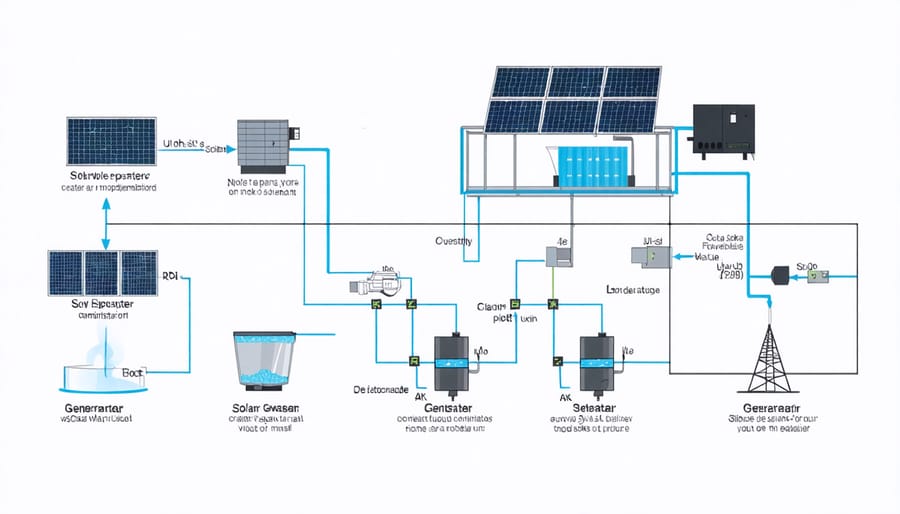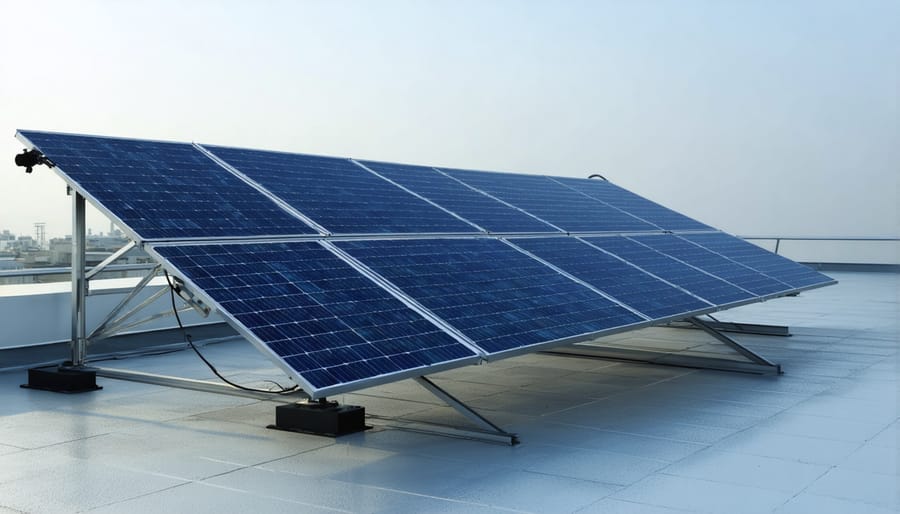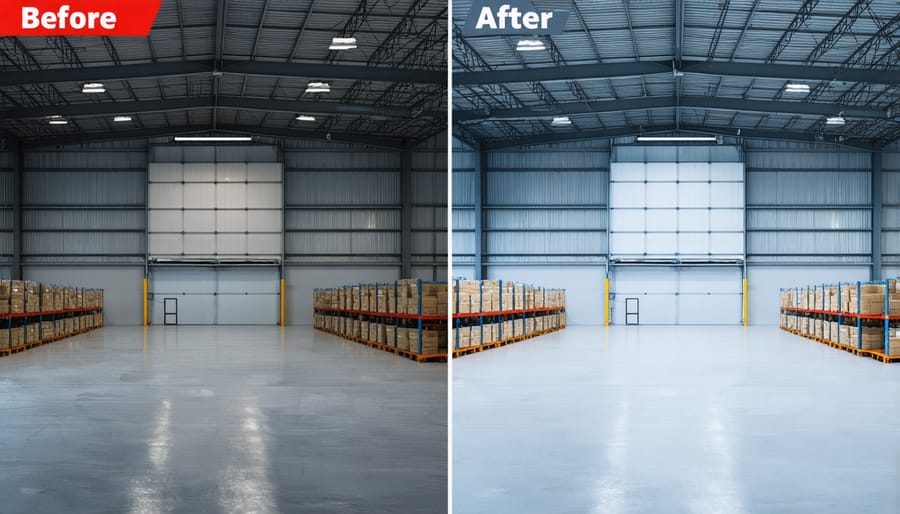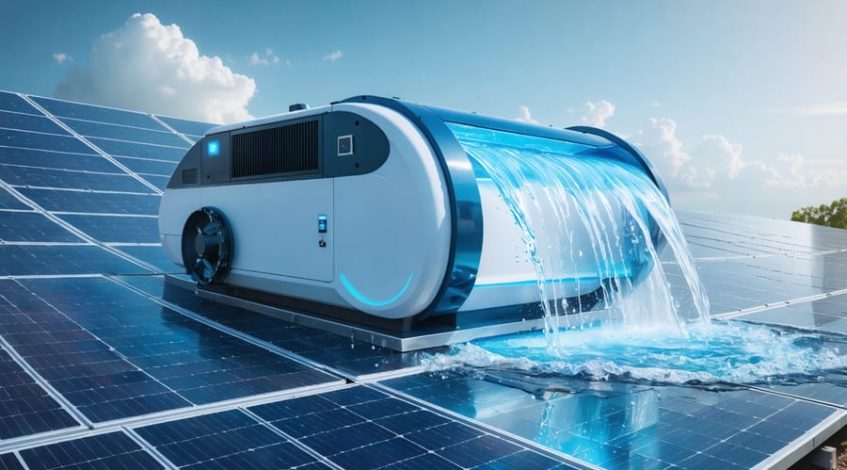In an era where sustainable water solutions are becoming increasingly critical, solar air water generators represent a groundbreaking fusion of renewable energy and atmospheric water harvesting technology. These innovative systems extract moisture from ambient air using solar-powered condensation processes, offering businesses and facilities a reliable, eco-friendly water source independent of traditional infrastructure.
By harnessing both solar energy and atmospheric humidity, these generators can produce up to 100 liters of clean water daily while reducing operational costs by up to 40% compared to conventional water supply methods. For facility managers and business owners seeking to enhance their sustainability initiatives while ensuring water security, solar air water generators provide a compelling solution that addresses multiple organizational challenges simultaneously.
The technology’s ability to operate off-grid makes it particularly valuable for remote facilities, disaster response operations, and regions with limited access to clean water infrastructure. As organizations increasingly prioritize environmental responsibility and operational resilience, these systems offer a practical pathway to achieve both objectives while delivering measurable returns on investment through reduced utility costs and enhanced resource independence.
This integration of solar power and water generation technology represents more than just an environmental choice—it’s a strategic business decision that positions organizations at the forefront of sustainable innovation.
How Solar Air Water Generators Transform Industrial Air Quality
The Science Behind Solar Air Water Generation
Solar air water generators represent a groundbreaking fusion of commercial solar energy and atmospheric water harvesting technology. These systems operate on a sophisticated thermodynamic principle known as the psychrometric process, which involves controlling air temperature and humidity to extract water from ambient air.
The process begins with solar panels powering an air handling unit that draws in atmospheric air. This air passes through a series of filters to remove particulates and contaminants. The cleaned air then encounters a cooling element, typically a condensing coil, which reduces the air temperature below its dew point. This temperature reduction causes water vapor in the air to condense into liquid form.
The condensed water undergoes multiple stages of filtration and mineralization to ensure potability. UV sterilization and mineral enhancement processes create water that meets or exceeds drinking water standards. The system’s efficiency varies with ambient temperature and relative humidity levels, typically producing more water in humid conditions.
Advanced models incorporate smart sensors and control systems that optimize energy consumption based on environmental conditions. These systems can achieve water generation efficiencies of up to 5 liters per kilowatt-hour under optimal conditions. The integration of energy storage solutions, such as batteries, ensures continuous operation even during non-sunny periods.
The technology’s effectiveness is particularly notable in regions with relative humidity above 40%, where water generation remains consistent throughout operational hours. Modern systems also feature remote monitoring capabilities, allowing operators to track performance metrics and water quality parameters in real-time.

Dual Benefits: Clean Air and Water Production
Solar air water generators represent a breakthrough in sustainable resource management by delivering two critical benefits simultaneously. These innovative systems effectively purify ambient air while producing clean water, making them particularly valuable for facilities seeking to optimize their environmental impact and operational efficiency.
The air purification process begins as the system draws in ambient air through advanced filtration mechanisms, removing particulate matter, pollutants, and airborne contaminants. This filtered air not only improves indoor air quality but also serves as the source for water generation. When integrated with industrial water treatment systems, these units can significantly reduce facility operating costs while maintaining high environmental standards.
The water generation process utilizes condensation technology to extract moisture from the filtered air, producing potable water that meets stringent quality standards. This dual-function capability proves especially valuable in environments where both air quality and water availability are concerns, such as manufacturing facilities, commercial buildings, and institutional settings.
Typical systems can generate between 100 to 1,000 liters of water daily while processing thousands of cubic meters of air, depending on the unit’s capacity and ambient conditions. This simultaneous production of clean air and water represents a significant advancement in sustainable resource management, offering organizations a practical solution to address both environmental and operational challenges efficiently.
Implementation and ROI for Industrial Facilities
Installation Requirements and Considerations
Proper installation of a solar air water generator requires careful consideration of several key factors to ensure optimal performance and efficiency. The system typically needs a minimum of 25-30 square meters of unobstructed roof or ground space for solar panel installation, with additional space for water storage tanks and filtration components.
The installation location must receive direct sunlight for at least 6-8 hours daily, with minimal shade interference from surrounding structures or vegetation. The system’s solar panels should be oriented at the optimal angle based on geographical location, typically between 30-45 degrees in most regions, to maximize solar energy capture.
Integration with existing water systems requires professional assessment and potentially modifications to current plumbing infrastructure. The water storage capacity should be sized according to daily consumption needs, with most commercial systems requiring 500-2000 liter tanks. Electrical requirements include a dedicated circuit for the system’s pumps and controls, typically operating on 220-240V AC power.
Structural considerations are crucial, as rooftop installations must account for the additional weight of both solar panels and water storage components. Building codes and local regulations may require specific permits and safety measures. The system should also include proper drainage and overflow mechanisms to prevent water damage during periods of high humidity or excessive production.
Temperature and humidity monitoring equipment must be installed to ensure optimal operation, with sensors placed strategically throughout the system. Regular maintenance access points should be incorporated into the installation design for efficient servicing and filter replacement.

Cost Analysis and Return on Investment
The initial investment for a solar air water generator system typically ranges from $5,000 to $15,000 for commercial installations, depending on capacity and site requirements. While this upfront cost may seem substantial, the system delivers significant business sustainability ROI through multiple revenue streams and cost reductions.
Operational costs average $0.02-0.05 per liter of water produced, significantly lower than bottled water alternatives ($0.50-1.00 per liter). The solar component eliminates approximately 80% of traditional energy costs associated with water generation, resulting in annual savings of $3,000-8,000 for medium-sized installations.
The payback period typically ranges from 3-5 years, considering:
– Reduced water procurement costs
– Lower energy expenses
– Decreased transportation and storage costs
– Minimal maintenance requirements
– Potential carbon credit benefits
Long-term financial benefits extend beyond direct cost savings. Organizations report enhanced property values, improved corporate sustainability metrics, and reduced dependency on municipal water supplies. Government incentives and tax benefits can further accelerate ROI, with some jurisdictions offering up to 30% in tax credits for renewable energy installations.
A typical 10-year financial projection shows cumulative savings of $50,000-120,000, making solar air water generators an increasingly attractive investment for forward-thinking organizations prioritizing both sustainability and financial performance.
Real-World Success Stories
Manufacturing Facility Case Study
A leading automotive parts manufacturer in Arizona implemented a solar air water generator system across their 50,000-square-foot facility, marking a significant step in the ongoing industrial energy revolution. The system, installed in 2021, consists of 12 large-capacity units powered by a 75kW solar array, producing an average of 600 liters of clean water daily from atmospheric moisture.
The facility previously consumed 220,000 gallons of municipal water annually for various manufacturing processes and employee use. After implementation, they reduced municipal water consumption by 42% and decreased their carbon footprint by 31 metric tons annually. The system’s intelligent monitoring capabilities allow real-time tracking of water production, quality, and energy consumption.
The initial investment of $425,000 was offset by federal green energy tax incentives and state-level manufacturing sustainability grants, covering 30% of the total cost. The company projects complete ROI within 4.5 years, factoring in reduced water utility costs and decreased dependence on municipal water supplies during peak demand periods. Additional benefits include enhanced corporate sustainability metrics and improved emergency preparedness through autonomous water production capability.
Warehouse Distribution Center Implementation
A recent implementation at the Midwest Distribution Hub demonstrates the significant impact of solar air water generators in large-scale warehouse operations. The 250,000-square-foot facility installed a network of 15 industrial-grade solar AWG units in 2021, resulting in daily water production of 750 gallons while reducing grid electricity consumption by 40%.
The system’s strategic placement across the facility’s roof maximizes solar exposure and enables efficient water distribution throughout the warehouse. The installation provides drinking water for 200 employees, supplies the facility’s cooling systems, and maintains optimal humidity levels for sensitive inventory storage.
Financial analysis reveals a return on investment within 30 months, with annual operational cost savings of $175,000. The system’s redundancy design ensures continuous water availability, even during periods of reduced sunlight. Additionally, the facility has reduced its carbon footprint by 85 metric tons annually.
The success of this implementation has led to the adoption of similar systems across three other distribution centers within the same network. The project serves as a blueprint for sustainable warehouse operations, demonstrating how solar air water generators can effectively address both environmental and operational challenges in large-scale industrial settings.

Solar air water generators represent a transformative solution for industrial facilities seeking sustainable water production methods. By harnessing solar energy to extract moisture from the air, these systems offer significant cost savings while reducing environmental impact. The technology’s ability to operate independently of traditional water infrastructure makes it particularly valuable for remote locations and areas with limited water access. Forward-thinking organizations implementing these systems have reported substantial reductions in water procurement costs and enhanced operational resilience. As water scarcity continues to challenge industries worldwide, solar air water generators provide a proven, environmentally responsible solution that aligns with corporate sustainability goals while delivering measurable returns on investment. We strongly encourage facility managers and business leaders to consider incorporating this innovative technology into their operations strategy, joining the growing number of industries benefiting from this sustainable water source.

